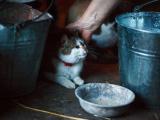Apr 4, 2013 (CIDRAP News) – Chinese health officials today reported five more human infections, along with two more deaths, from the H7N9 avian influenza virus, which media reports said has now been detected in samples from pigeons at an agricultural market in Shanghai.
The latest reports appeared to raise the total number of cases to 14, with 6 deaths. .
Among today's new developments is the first H7N9 infection in a child, who is apparently sick with a milder illness, and media reports that a contact of one of the confirmed cases is sick with a flu-like illness.
The H7N9 virus hasn't been known to infect humans before, and so far all of the cases have been reported from eastern China. The illnesses have spanned at least three provinces, though many have been reported from Shanghai, China's biggest city. Illness onset dates that are known range from the middle of February through the end of March.
Earlier today the World Health Organization (WHO) released an update that included information about some of the newly confirmed cases and deaths.
The three fatal cases involved a 38-year-old man from Zhejiang province who got sick on Mar 7, a 64-year-old man from Zhejiang province who started having symptoms on Mar 29, and a 48-year-old man from Shanghai who became ill on Mar 28, according to the WHO.
The fourth patient the WHO reported on is a 67-year-old man from Zhejiang province who got sick on Mar 25 and is hospitalized in critical condition. (The descriptions of the 38-year-old and the 67-year-old seem to match two of the cases first reported yesterday.)
News reports from China, along with Chinese social media sites, carried accounts of more confirmed H7N9 cases. Three of them were reported by Hong Kong's Centre for Health Protection (CHP), and all the patients are from Shanghai. They include a 67-year-old woman in critical condition, a 4-year-old boy in satisfactory condition, and a 52-year-old woman who died yesterday. The report did not list illness onset dates.
The WHO said no epidemiological links have been found among any of the lab-confirmed cases and that 400 close contacts are being monitored. So far none show signs of illness.
However, the CHP said that of 52 close contacts of the three newly announced cases from Shanghai, one who had contact with the 52-year-old woman who died has a fever and runny nose.
For now, it's unclear if the symptomatic contact mentioned in the CHP statement is the same one mentioned in Chinese media reports today. Xinhua, China's state news agency, reported that a person who had contact with a now-deceased H7N9 patient in Shanghai is being treated in quarantine after coming down with a fever, runny nose, and throat itching. The source of the information was the Shanghai Municipal Health and Family Planning Commission.
So far, no human-to-human transmission has been confirmed, and there has been no evidence of ongoing transmission. However, scientists who have examined the genetic sequences have reported there are signs that the virus has adapted to mammals.
Authorities still don't know what animal reservoirs harbor the virus, but one clue emerged today in the Chinese media, which reported that the virus had been detected in samples from pigeons that were at a Shanghai market.
Xinhua, citing the country's agriculture ministry, said the samples were collected at an agricultural marketplace in Shanghai's Songjiang district. Tests at China's national avian influenza reference laboratory found that gene sequences in the H7N9 viruses from the pigeons matched those that infected humans.
It said the ministry ordered more intensive monitoring for the virus. A Xinhua story posted later in the day said the pigeon findings prompted Shanghai authorities to close a live-poultry-trading zone and begin slaughtering all birds.
Officials also closed poultry trading areas in two markets in Shanghai's Minhang district after H7 viruses were detected in samples, according to the Xinhua report. The report did not specify what animals or items were sampled.
See also:
Apr 4 WHO statement
Apr 4 CHP statement
Apr 4 Xinhua story mentioning sick contact
Apr 4 Xinhua story on pigeon findings




















